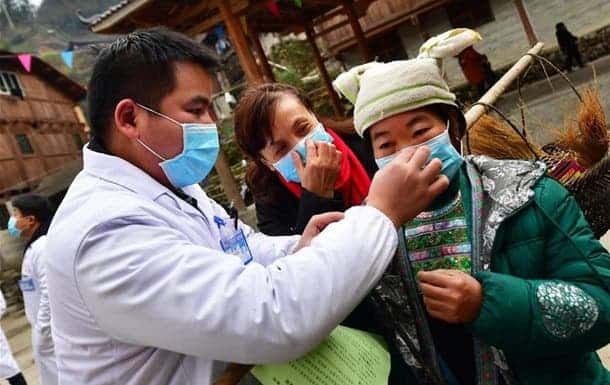Ever since the early stages of the coronavirus outbreak, all sorts of comparisons with the flu (influenza) have emerged in one form or another.
Why would this disease that infected 90,000 people raise more alarms than seasonal influenza, which infects millions of people every year, killing hundreds of thousands?
At first glance, the question seems legitimate. But when we look at things more carefully, it becomes clear why this happens, and why these comparisons only serve to downplay the Covid-19 risks and create confusion.

Not a black swan
The first thing that’s important to understand, says epidemiologist Tom Duszynski, is that Covid-19 is not a ‘black swan’ event — it’s not a freak occurrence. In fact, a study that came out a year ago essentially predicted the outbreak, and this type of outbreak is becoming more and more common. Since the 1970s, there have been about 40 new, infectious diseases discovered. Most of them came from animals, often in connection to wildlife trade.
But while we can make assumptions about the likelihood of such outbreaks emerging, understanding emerging viruses and the diseases they cause is far more complicated.
In containing any emerging disease, tracking down the spread of the pathogen is crucial. The problem is, most of them emerge during the cold season when the flu is also active. If a disease happens to have different symptoms than the flu, then it is easier to track. But in the case of Covid-19, the symptoms (fever, cough, and body aches) are very similar to the flu, making it difficult to differentiate between the two.
So we have a new virus, with numerous questions around it, that kind of looks like the flu. But that doesn’t explain why Covid-19 raises more concerns than the flu.
More likely to spread, more likely to kill
If all we had was a new type of flu, that was one thing. But Covid-19 is much more dangerous than the seasonal flu.
For starters, it’s more contagious. The average person, even with mild symptoms, is likely to spread the disease to more than two people. By contrast, the seasonal flu’s rate is roughly half.
In addition, the incubation period of the coronavirus is 2-14 days, with some suspicions that it could be even longer than that. The flu incubation period is usually 1-4 days, and in extreme cases, it can range up to five days. This means that the period in which the virus can be transmitted is around 3 times higher than influenza, which also helps to explain why it’s so contagious.
In addition, there are some asymptomatic cases, but they can still spread the disease, making it very difficult to keep track of all Covid-19 cases. Add a potentially high reinfection rate and you end up with a disease that’s far more contagious and insidious than the flu.
It’s not just the spread of disease, either — the other major reason why officials are so worried about Covid-19 is that it is lethal far more often than influenza. The seasonal flu is lethal in less than 0.1% of all cases, compared to 1-2% for COVID-19 — this makes it closer to the infamous 1918 influenza epidemic known as the “Spanish flu,” which infected a quarter of a planed and had a kill rate of about 2.5%.
There is even another reason for concern: we don’t yet know if it goes away during the summer. The flu is seasonal, and it pretty much goes away in the warm season, but there’s no guarantee that Covid-19 will do the same. Actually, given how the virus spread in Singapore at summer temperatures of over 30 C (86 F), that seems rather unlikely at this point (though it is still uncertain).
No vaccine, no treatment

Unlike the flu, there is no vaccine that can protect against Covid-19 — everyone is susceptible to the disease. While vaccination rates are still fairly low overall, they are growing year after year; and most importantly, key groups of people have high vaccination rates (at least in some countries).
For instance, in the US, 45% of adults aged 18-49 with high-risk chronic conditions were vaccinated. A similar percentage of adults ages 50–64 were vaccinated. This is very important because the elderly and immunocompromised are most at risk of the disease.
Furthermore, vaccination rates are very important for health professionals. We’ve seen that doctors and nurses are at risk, and in some areas of Italy, as many as 10% of all medical staff are infected. If the medical system is overrun, actively containing the disease becomes virtually impossible. In the US, health care workers most at risk of contracting contagious disease have a vaccination rate of 47%.
While efforts to develop a vaccine are in full swing, a new vaccine won’t be available for months (even under optimistic scenarios). Even should such a vaccine be developed, global availability will not be ensured quickly, so at least in the short and medium run, vaccines won’t protect us from Covid-19.
The same thing goes for treatments. Several treatments (both used in other diseases and developed specifically for this outbreak) have been proposed, but it is unlikely that they will be deployed on a large scale.
The bottom line
The way things are right now, influenza is worse than the coronavirus. It infects more people, and it kills more people overall despite having a lower fatality rate.
But Covid-19 is more contagious, more insidious, and has a higher fatality rate — so if the outbreak reaches influenza levels, it will almost certainly do much more damage. We don’t know if it can become seasonal like the flu — but if it does, it will be devastating.
Covid-10 has pandemic potential, and the window of containment is closing down very quickly. Already, several disease clusters have emerged outside of China. We see them in Italy, Japan, Iran, and South Korea, to name just a few. This is why authorities are so concerned about this.
Although it should be said that the flu is an extremely underrated problem and its dangers should not be overlooked or minimized, derisory comparisons with Covid-19 are unwarranted.
Downplaying it through direct comparisons doesn’t really make sense because we’re comparing a known evil (the flu) to an unknown evil’s potential (Covid-19).
There are still many unknowns about the disease, and while there is no reason to panic, this is a dangerous ongoing situation that should be treated with the utmost attention.


